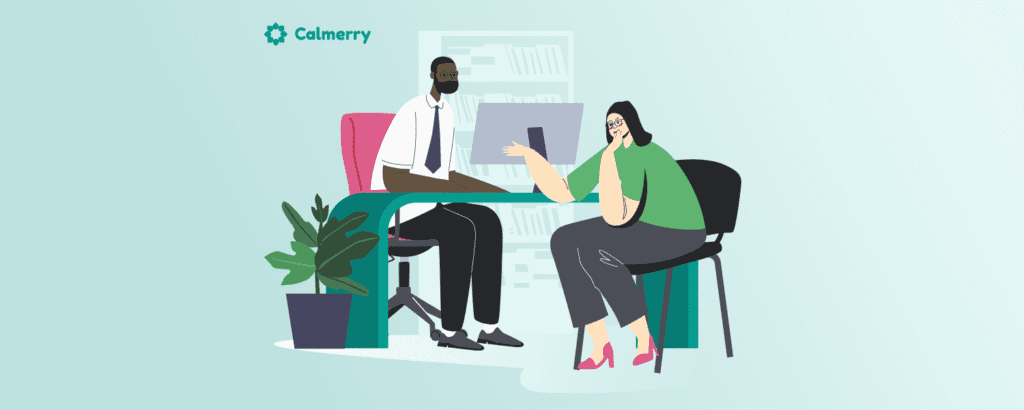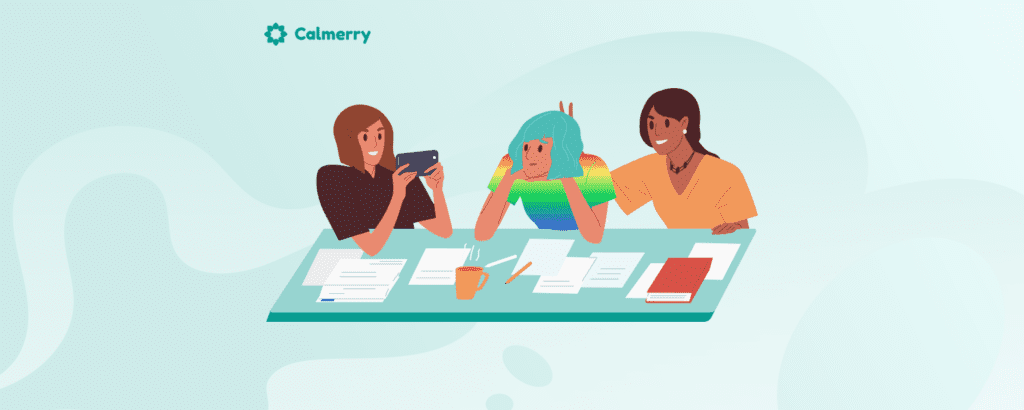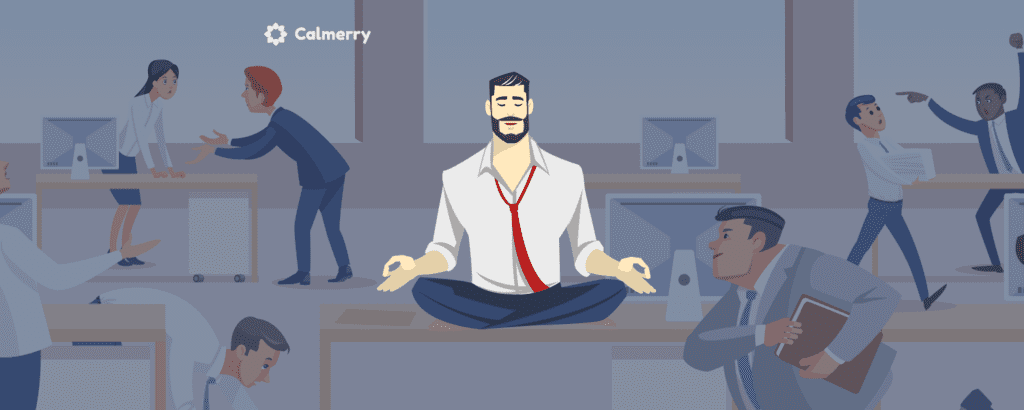Recognizing Mental Illness During National Disability Employment Awareness Month
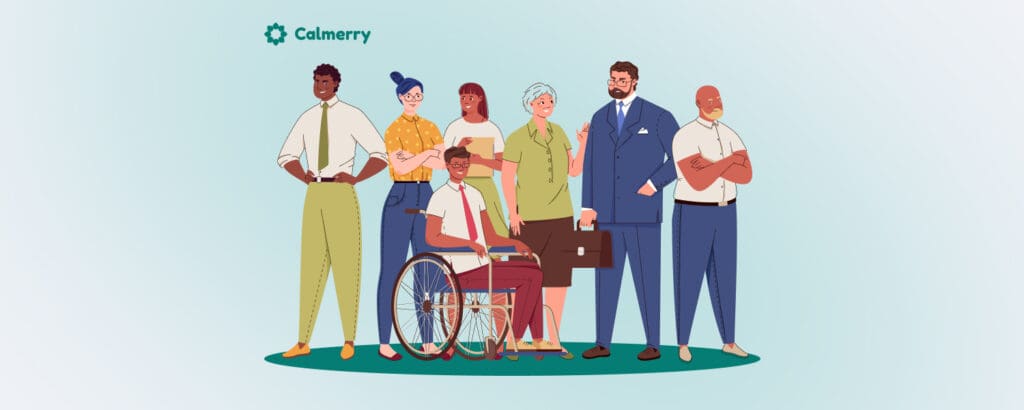
In this article
October is National Disability Employment Awareness Month (NDEAM). This annual observance pays tribute to America’s workers with disabilities who help to keep the nation’s economy strong and reaffirms the commitment to ensuring equal opportunity for all. [1] About | National Disability Employment Awareness Month | Library of Congress. (n.d.). The Library of Congress. https://www.loc.gov/disability-employment-awareness-month/about/
It is an opportunity for employers to highlight and reinforce their efforts and to bring education and awareness to the resources available to their employees.
This year’s NDEAM theme is “Advancing Access and Equity: Then, Now and Next.” It celebrates the passage of 1973’s Rehabilitation Act and how it has shaped and may continue to shape the workplace in the future.
A disability isn’t always physical
When you think of the term “disability,” mental illness may not immediately come to mind. A disability isn’t always physical or something easy to recognize.
Mental illness is often referred to as an invisible disability.
Its symptoms are not always readily apparent, but its impacts for the person and the workplace can be significant.
In recent years, particularly since the pandemic, mental health awareness and the demand for services have skyrocketed. It’s estimated that about 26% of American adults (about 1 in 4) suffer from a diagnosable mental illness. [2] Mental Health Disorder Statistics. (2023, February 1). https://www.hopkinsmedicine.org/health/wellness-and-prevention/mental-health-disorder-statistics
Employees and employers alike are recognizing the impacts of mental health and the need for compassionate, supportive practices.
Chances are that your company has employees living with a mental illness as well as others struggling to maintain their mental health.
Knowing how to compassionately help employees manage their mental illness and provide mental health support can be a win-win for both the employer and the employee.
What is a mental illness?
To understand how to support employees with mental illness, it’s important to understand just what mental illness is.
As defined by the American Psychiatric Association, “mental illnesses are health conditions involving changes in emotion, thinking or behavior (or a combination of these). Mental illnesses can be associated with distress and/or problems functioning in social, work, or family activities.” [3] What is Mental Illness? (n.d.). https://www.psychiatry.org/patients-families/what-is-mental-illness
Mental illness is not a single condition but rather a group of conditions or disorders. They are generally categorized as:
- Mood disorders (e.g., depression, bipolar disorder)
- Anxiety disorders (e.g., generalized anxiety disorder, panic disorder, post-traumatic stress disorder)
- Personality disorders
- Psychotic disorders (e.g., schizophrenia)
- Eating disorders (e.g., anorexia, bulimia)
- Trauma-related disorders (e.g., post-traumatic stress disorder)
- Substance abuse disorders (e.g., alcohol dependence)
Symptoms will vary depending on which condition someone is living with and their unique circumstances. What all these conditions have in common is that they can create impairment in a person’s functioning at home, at work, and socially.
How to recognize mental illness in the workplace
Some signs that an employee may be dealing with a mental health issue might include:
- Decreased engagement with others
- Increased absenteeism
- Difficulty or disinterest in completing their assigned tasks
- Uncharacteristic behaviors
- Missing deadlines
- Substance misuse
- Increased irritability or anxiety at work
- Difficulty problem-solving
Of course, these behaviors are not always indicative of a mental illness. They can also signal that an employee may be struggling with some issue.
Either way, a supportive environment and access to mental health resources can be a lifeline for someone who is struggling.
What’s important to know is that mental illness is a highly treatable health condition. Most people with mental illness are able to fully function in their daily lives. Having access to treatment and support resources can make a significant difference.
Mental illness statistics
Of course, not everyone who feels “stressed out” or “anxious” has a diagnosable mental disorder.
However, you might be surprised to learn just how common mental illness is:
- Anxiety has become the most often diagnosed mental health disorder in the United States, affecting about 30% of people at some point, followed closely by depression. [4] What are Anxiety Disorders? (n.d.). https://www.psychiatry.org/patients-families/anxiety-disorders/what-are-anxiety-disorders [5] What is depression? (n.d.). https://www.psychiatry.org/patients-families/depression/what-is-depression
- According to a recent survey, about 46.3 million people ages 12 and older (about 16% of the population) meet the criteria for a substance use disorder. [6] 2021 National Survey of Drug Use and Health (NSDUH) releases. (n.d.). https://www.samhsa.gov/data/release/2021-national-survey-drug-use-and-health-nsduh-releases
- Post-traumatic stress disorder (PTSD) affects about 3% of the US population. PTSD can affect people of any ethnicity, culture, gender, or age. It’s estimated that about 1 in 11 people will be diagnosed with PTSD in their lifetime. [7] What is Posttraumatic Stress Disorder (PTSD)? (n.d.). https://www.psychiatry.org/patients-families/ptsd/what-is-ptsd
- About 4.4% of adults will experience bipolar disorder at some time in their lives. [8] Bipolar disorder. (n.d.). National Institute of Mental Health (NIMH). https://www.nimh.nih.gov/health/statistics/bipolar-disorder
- The lifetime prevalence of obsessive-compulsive disorder (OCD) is about 2.3% [9] Obsessive-Compulsive Disorder (OCD). (n.d.). National Institute of Mental Health (NIMH). https://www.nimh.nih.gov/health/statistics/obsessive-compulsive-disorder-ocd
These statistics suggest that living with a mental illness is not at all uncommon.
For some, their illness is well-managed, and they are able to function well. For others, treatment and additional support resources help them to manage their symptoms and maintain a healthy level of functioning.
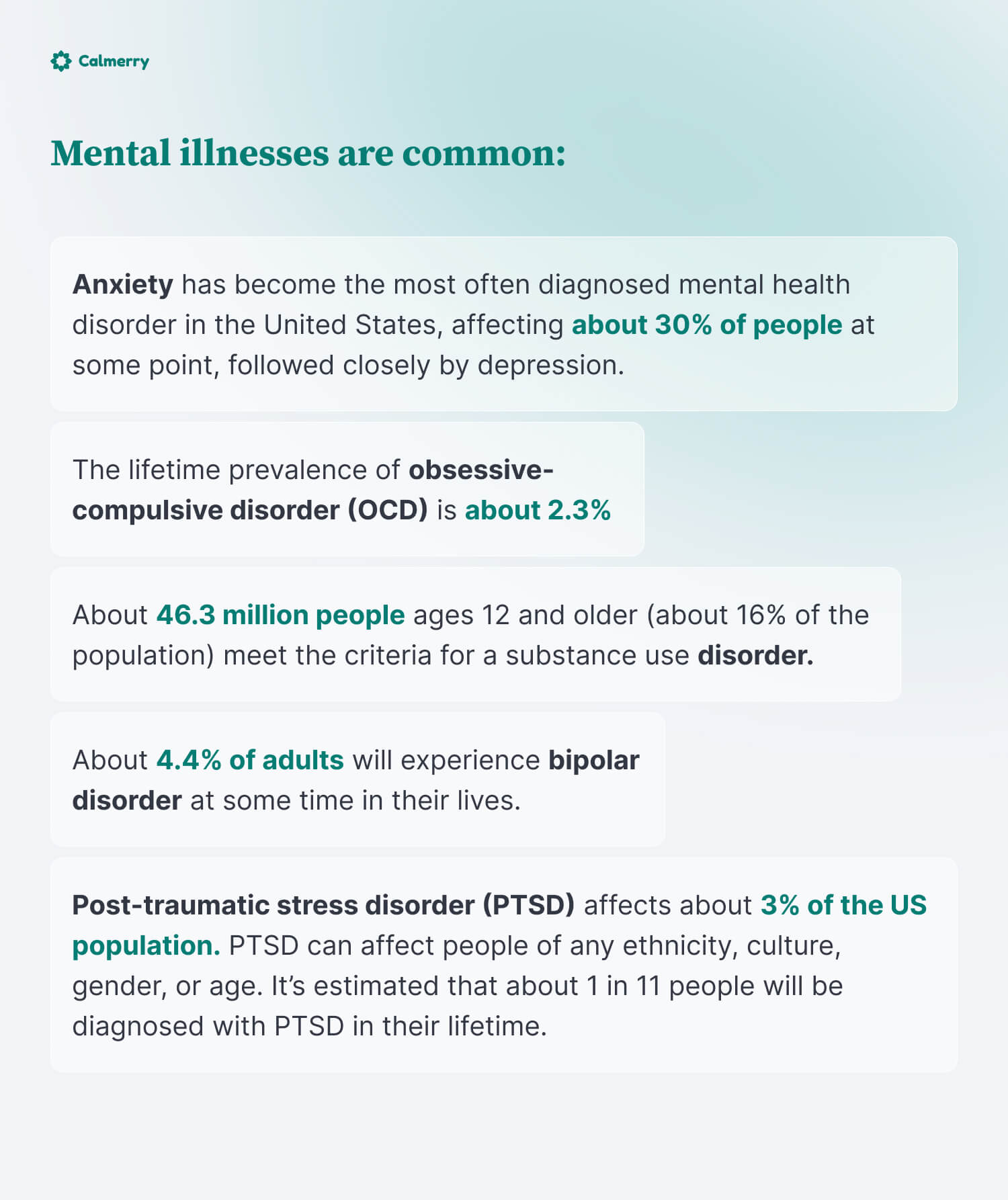
A word about mental health
It’s important to note that mental illness is not the same as mental health, although the terms are often used interchangeably.
Mental illness is a term that refers collectively to all diagnosable mental disorders.
Mental health [10] What is Mental Illness? (n.d.). https://www.psychiatry.org/patients-families/what-is-mental-illness is a term that is used to describe functioning effectively in one’s daily activities, resulting in:
- Engaging in productive activities (e.g., work or school)
- Maintaining healthy relationships
- Being able to adapt and cope with change or adversity in healthy ways
Mental health is not simply the opposite of mental illness. Mental health is a state of emotional, psychological, and social well-being that helps us build relationships, manage daily stressors, solve problems, and make decisions.
We use these skills in every facet of life, including work. Mental health is vital to one’s overall well-being and can even play a role in physical health.
On the other hand, mental illness undermines psychosocial functioning, creating a psychosocial disability.
Intersectionality of physical disabilities and mental health
Mental health can affect physical health and vice versa. About 1 in 3 people with a chronic health condition also have a mental health problem, often anxiety or depression. [11] Daré, L. O., Bruand, P., Gérard, D., Marin, B., Lameyre, V., Boumédiène, F., & Preux, P. (2019). Co-morbidities of mental disorders and chronic physical diseases in developing and emerging countries: a meta-analysis. BMC Public Health, 19(1). https://doi.org/10.1186/s12889-019-6623-6
Conversely, mental distress has been linked to a number of physical health issues, [12] WebMD Editorial Contributor. (2021, March 30). How does mental health affect physical health. WebMD. https://www.webmd.com/mental-health/how-does-mental-health-affect-physical-health#1-1 including:
- Heart disease
- Diabetes
- Sleep disturbances (e.g., insomnia, sleeping too much)
- Respiratory issues
- Chronic pain
People with physical disabilities can also struggle with mental health issues.
In fact, it is estimated that people with physical disabilities are up to five times more likely to experience mental distress than those without a physical disability. [13] Mental health for all. (2020, November 30). Centers for Disease Control and Prevention. https://www.cdc.gov/ncbddd/disabilityandhealth/features/mental-health-for-all.html
Frequent mental distress has been linked to poor health behaviors, increased use of health services, mental disorders, chronic disease, and difficulties with daily activities.
Breaking stereotypes: 5 common myths about mental illness
Not so long ago, people with mental illness were thought to be “possessed,” “hysterical,” or even “witches.”
They were hidden away or sent to asylums and subjected to all kinds of remedies of the day. At best, those remedies were ineffective. At worst, they were cruel and dangerous.
Thankfully, today, we know so much more about mental illness.
Despite the recognition of mental illness as a valid health condition and the many advances in treatment, mental illness is still surrounded by stigma and misinformation.
Some of the common myths [14] Mental health myths and facts. (n.d.). SAMHSA. https://www.samhsa.gov/mental-health/myths-and-facts that prevail include:
Myth 1: People with mental illness are violent
Fact: People with mental illness are no more likely to be violent than someone without mental illness. In fact, they are more likely to be victims of violence than to be aggressors.
Myth 2: People with mental illness can’t handle the stress of a job
Fact: A person with mental illness can be just as productive as other employees, especially when they are able to manage their condition well.
Myth 3: A mental illness is a sign of weakness, laziness, or some character flaw
Fact: Mental illness has nothing to do with one’s character, intelligence, or motivation. A variety of factors, including genetics, traumatic experiences, and family history of mental illness, are thought to contribute to its development.
Myth 4: There’s no hope for severe mental illness
Fact: There are many viable treatment and recovery options for someone living with mental illness. Evidence-based therapy, self-help resources, and, in some cases, medication can help someone successfully manage their condition.
Myth 5: You can’t help someone with a mental illness
Fact: People with mental illness need more than just treatment. Support from family, friends, employers, and other important people in their lives is a vital part of their recovery.
Offering support, treating them with respect, or helping them access resources are a few ways of showing compassion and care.
Is mental illness a disability?
The short answer is yes. There are a number of mental disorders that are recognized as disabilities. Mental illness is one of the top reasons for a disability determination.
The longer answer is it can be. Having a diagnosed mental illness is not in and of itself considered disabling.
For some, their symptoms are relatively mild and stable with treatment. For others, their symptoms are more severe and may, in fact, be debilitating.
The terms mental illness and disability are often used interchangeably, but they are separate terms:
- Mental illness is a medical term that generally refers to psychiatric conditions.
- Psychiatric disability is generally used to refer to conditions or impairments covered under the Americans with Disabilities Act (ADA). [15] What is the definition of disability under the ADA? (n.d.). ADA National Network. https://adata.org/faq/what-definition-disability-under-ada
The ADA defines disability as a physical or mental impairment that substantially limits one or more major life activities, like being able to care for oneself or to work.
Having a mental illness is not automatically a disability but can be severe enough to create a disability.
– Dr. Dawn Ferrara, PsyD, Licensed Professional Counselor (LPC), and mental health writer
Impact on employment and career
Dealing with mental health issues can have a significant impact on an employee’s well-being and employment:
- Unaddressed mental health issues translate to missed workdays and decreased productivity, with an estimated cost in the billions [16] World Health Organization: WHO. (2022). Mental health at work. www.who.int. https://www.who.int/news-room/fact-sheets/detail/mental-health-at-work
- Undermines confidence and identity
- Impairs social connections and communication with co-workers
- Mental health issues can contribute to both job loss and problems with future employment [17] Olesen, S. C., Butterworth, P., Leach, L., Kelaher, M., & Pirkis, J. (2013). Mental health affects future employment as job loss affects mental health: findings from a longitudinal population study. BMC Psychiatry, 13(1). https://doi.org/10.1186/1471-244x-13-144
- People with severe mental illness are often excluded from the workforce despite the ability to work and its importance in recovery.
Having a mental health condition can create significant psychosocial disability that can impact family, work, career, and more.
Advocating for rights, inclusivity, and support – what companies can do
Today’s employees are zealously guarding their mental health and expecting a business culture that supports mental wellness.
Employers are recognizing the important role that mental health and wellness plays in employee satisfaction and productivity.
In fact, a recent survey found that about 86% of employers view employee mental health as the top concern for their company. [18] Employers pinpoint workforce mental health as one of HR’s top priorities for 2022. (n.d.). WTW. https://www.wtwco.com/en-us/news/2022/01/employers-pinpoint-workforce-mental-health-as-one-of-hrs-top-priorities-for-2022
There are things you can do to support workplace mental health for every employee.
1. Notice. Talk. Act.
The American Psychiatric Association has developed an approach for a supportive way of checking in with others in the workplace.
Called the Notice Talk Act, this approach is a way to express care and concern for someone who may be struggling while creating an organizational culture of caring.
2. The importance of a stigma-free, inclusive, and supportive workplace
While mental health has become an increasingly visible topic, stigma and fear of judgment still exist. Creating a supportive, stigma-free workplace can create a sense of inclusion and acceptance.
Positive workplaces yield positive benefits. One survey found that workers who felt supported in their mental health:
- Were less likely to experience mental health symptoms
- Were less likely to miss work
- Reported feeling more comfortable talking about their mental health at work
- Reported higher job satisfaction
- Intended to stay with their company
Employees who feel psychologically safe, supported, and valued are more likely to be engaged and strive to perform at their best.
3. Improving resilience and coping
As an employer, you can help to create an environment of support and learning.
Offering ways for employees to learn how to manage their stress and build skills that enhance wellness is a powerful way to encourage and empower them.
- Provide information about mental health issues such as anxiety, depression, stress, etc. A company newsletter is a great way to share information
- Offer employee workshops or webinars on mental health topics as well as how to help support each other
- Provide information about mental health apps or local mental health resources
- Include coverage for mental health in employer health plans
- Normalize and encourage the use of self-care and work-life balance skills like taking scheduled breaks, setting appropriate boundaries, asking for help, etc.
- Be a resource for your employees
4. Open conversations and safe spaces
It’s one thing to speak of inclusion and acceptance, but employees need to see it in action.
Psychological safety at work is paramount. They need to know that it is truly safe to speak about their mental health challenges without fear of judgment or repercussions.
- Normalize talking about mental health
- Connect with your employees often. Model being a safe person to talk to and encourage others to do the same
- Create a wellness space that can be used when needed, whether for a conversation or when an employee is feeling overwhelmed, struggling with some bad news, or dealing with a health/mental health issue (e.g., anxiety attack). Think of it as a place to take a few minutes to deal with whatever is happening so they can return to their tasks and finish their day.
- Have an open-door policy.
5. Regular check-ins
Make meaningful connections with your employees. You probably already have regular meetings or check on work progress. Make it a point to check in with your employees, too.
Ask them how they’re doing. Listen to what they say. Knowing that their well-being matters to you and that you are interested in them can open the pathway to communication.
– Dr. Dawn Ferrara, PsyD, Licensed Professional Counselor (LPC), and mental health writer
If they see that you are genuinely interested in their well-being, they’re more likely to reach out if they need help.
6. Legal rights and protections, zero-discrimination policy
Employees need to know that they have rights and protections under the law. They also need to know that there are clear policies and procedures in place to protect them from discrimination.
- Educate your employees about the law. The ADA or your state’s labor board are great resources.
- Make sure that everyone is aware of your company’s own policies and procedures regarding fairness, inclusion, and discrimination. Your HR can be a great resource for explaining policies and answering employee questions.
7. Access to quality mental health care
Ideally, every employee would have access to quality mental health care. The reality is not every company offers those benefits.
If your company offers mental healthcare benefits, provide employees with access to that information and how to access care. Flyers, brochures, email reminders, etc., can all be useful in encouraging someone to seek care when needed. Engage your HR for help if possible.
If your company doesn’t offer those benefits, advocate for them. People with mental health issues have much better outcomes when they have access to the help they need.
8. Share the resources
Understanding mental health and mental illness can help you to be better prepared to support your employees. And, when they understand their own issues, they can make better care decisions, too.
To learn more about mental health, check out these resources:
- National Alliance on Mental Illness (NAMI) https://www.nami.org/About-Mental-Illness
- National Institute of Mental Health (NIMH) https://www.nimh.nih.gov/
To learn more about disabilities and legal protections, visit:
Americans with Disabilities Act (ADA) https://www.ada.gov/. ADA Information Line – Voice 800-514-0301 | 1-833-610-1264 (TTY)
If an employee needs help…
One of the biggest challenges people have when seeking help is knowing where to go and how to make time. Employees are often worried about taking time off work for personal needs.
There’s a growing trend for mental health services that are convenient and accessible. Online therapy has become a highly popular, easily accessible alternative to traditional in-office therapy.
Sessions can be scheduled at times that work best and from the comfort of home or other private location. And, most importantly, online therapy has proven to be as effective as in-office therapy.
At Calmerry, we have experienced therapists ready to help. We believe that mental health care should be readily accessible when someone is in need. When your employee calls, they can be matched with a mental health professional within one hour and start therapy in one to two days.
There are no waiting weeks or months for an appointment. And there’s no complicated process to get started. One call – and they’re on their way to getting the help they’re seeking.
Conclusion
There are a lot of things companies can do to promote mental health. NDEAM reminds us of the importance of inclusion, zero tolerance for discrimination, and the need to prioritize mental health for employees.
Perhaps the most powerful thing you can do as a manager, today and every day, is to simply be an advocate for mental health and inclusion.
Lead by example when and where you can. When you support and empower your employees, you are setting everyone up for success.
About | National Disability Employment Awareness Month | Library of Congress. (n.d.). The Library of Congress. https://www.loc.gov/disability-employment-awareness-month/about/
Mental Health Disorder Statistics. (2023, February 1). https://www.hopkinsmedicine.org/health/wellness-and-prevention/mental-health-disorder-statistics
What is Mental Illness? (n.d.). https://www.psychiatry.org/patients-families/what-is-mental-illness
What are Anxiety Disorders? (n.d.). https://www.psychiatry.org/patients-families/anxiety-disorders/what-are-anxiety-disorders
What is depression? (n.d.). https://www.psychiatry.org/patients-families/depression/what-is-depression
2021 National Survey of Drug Use and Health (NSDUH) releases. (n.d.). https://www.samhsa.gov/data/release/2021-national-survey-drug-use-and-health-nsduh-releases
What is Posttraumatic Stress Disorder (PTSD)? (n.d.). https://www.psychiatry.org/patients-families/ptsd/what-is-ptsd
Bipolar disorder. (n.d.). National Institute of Mental Health (NIMH). https://www.nimh.nih.gov/health/statistics/bipolar-disorder
Obsessive-Compulsive Disorder (OCD). (n.d.). National Institute of Mental Health (NIMH). https://www.nimh.nih.gov/health/statistics/obsessive-compulsive-disorder-ocd
What is Mental Illness? (n.d.). https://www.psychiatry.org/patients-families/what-is-mental-illness
Daré, L. O., Bruand, P., Gérard, D., Marin, B., Lameyre, V., Boumédiène, F., & Preux, P. (2019). Co-morbidities of mental disorders and chronic physical diseases in developing and emerging countries: a meta-analysis. BMC Public Health, 19(1). https://doi.org/10.1186/s12889-019-6623-6
WebMD Editorial Contributor. (2021, March 30). How does mental health affect physical health. WebMD. https://www.webmd.com/mental-health/how-does-mental-health-affect-physical-health#1-1
Mental health for all. (2020, November 30). Centers for Disease Control and Prevention. https://www.cdc.gov/ncbddd/disabilityandhealth/features/mental-health-for-all.html
Mental health myths and facts. (n.d.). SAMHSA. https://www.samhsa.gov/mental-health/myths-and-facts
What is the definition of disability under the ADA? (n.d.). ADA National Network. https://adata.org/faq/what-definition-disability-under-ada
World Health Organization: WHO. (2022). Mental health at work. www.who.int. https://www.who.int/news-room/fact-sheets/detail/mental-health-at-work
Olesen, S. C., Butterworth, P., Leach, L., Kelaher, M., & Pirkis, J. (2013). Mental health affects future employment as job loss affects mental health: findings from a longitudinal population study. BMC Psychiatry, 13(1). https://doi.org/10.1186/1471-244x-13-144
Employers pinpoint workforce mental health as one of HR’s top priorities for 2022. (n.d.). WTW. https://www.wtwco.com/en-us/news/2022/01/employers-pinpoint-workforce-mental-health-as-one-of-hrs-top-priorities-for-2022

